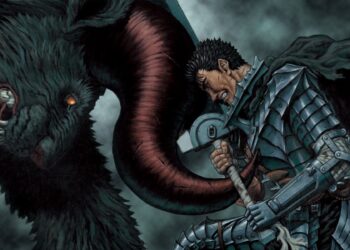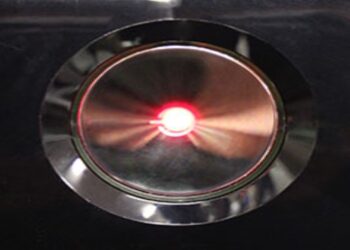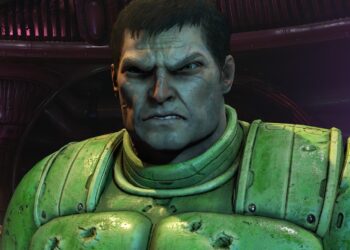Is Chara Really the Genocidal Maniac Everyone Thinks They Are? Let’s Dive Deep.
Chara’s Role in Undertale: More Than Just a Villain?
Ah, Chara. The name sends shivers to some Undertale fans. Others engage in intense debates. Often labeled the “genocidal maniac” or “human Flowey,” Chara’s reputation is infamous. But is this the full picture? Let’s unpack this.
Is Chara evil? That’s the million-dollar question. Many label Chara as the ultimate villain of Undertale. They point at them as the puppet master of the Genocide Route. Some see pure evil in them. However, the truth is nuanced, far from black and white morality.
Let’s consider Chara’s role. In the Neutral and True Pacifist routes, Chara is the “overarching antagonist.” Some even see them as the possible narrator. Sounds villainous, right? But in the Genocide Route, things shift. Chara takes on more of a deuteragonist’s role. Interesting, no?
Is Chara pulling strings from the start? Or is it a reaction to player choices? This distinction is crucial. Some fan interpretations lean toward a purely evil Chara. But the original game shows more complexity. The question may not be “Is Chara evil?” but “Why is Chara seen as evil?”.
Comparing Chara to Other Undertale Characters: Who’s Really Naughty or Nice?
Let’s throw in some other Undertale characters for comparison. The constant debate is Chara versus Frisk. “Who is more evil?” the internet asks. Surprisingly, many argue it is FRISK who is the evildoer in the Genocide Route! Mind-blowing?
Logically, Frisk wields the weapon. They make choices to fight and eliminate every monster in their path during Genocide. Chara? They show up at the very end, after Frisk’s destruction. An internet user stated, “Frisk does all the killing… Chara awakens at the end.” Food for thought, eh?
And Flowey, or Asriel? Often seen as the primary antagonist in Neutral and True Pacifist routes. Asriel as Flowey is problematic. He manipulates, resets timelines, and embodies the “kill or be killed” philosophy. Much more villainous than merely showing up at a massacre.
Then we have Sans. Is he good or evil? He’s complex. Some view him as a “good guy” for being protective towards monsters and Papyrus in Pacifist. He cracks jokes and seems laid-back. But his manipulation and brutality in the Genocide Route complicate this. “Moral ambiguity” is perhaps his middle name.
What about Alphys and Toriel? Evil? In fan-comics like Negativetale, Alphys becomes a “sadistic right-hand” mad scientist. But in the main game, Alphys is anxious. Toriel appears motherly but shows stubbornness and possessiveness, particularly with Frisk. Interpretations show her as having a “sadistic facade,” but these aren’t mainstream views.
Unpacking Chara’s Backstory and Motivations: What Drove Them?
To understand Chara, we need to explore their backstory. Chara wasn’t having a picnic prior to falling into the Underground. They “hated humanity,” according to Asriel. Strong words! This hatred appears to be a key motivator.
Chara and Asriel planned to break the barrier, thinking human souls held the key. Chara’s plan, involving poisonous flowers, tragically failed. Asriel absorbed Chara’s soul, crossed the barrier, but ultimately failed to fulfill their plan, leading to death.
Who betrayed Chara? Some point fingers at Asriel. In Flowey’s soulless state, he doesn’t gain compassion points. He admits to not initially trying to be good, unlike how Flowey eventually evolves. Asriel “ruined Chara’s plan” by refusing violence, leading to their demise. But was it betrayal or Asriel’s inability to commit violence?
Why is Flowey scared of Chara in the Genocide Route? Even without empathy, Flowey recognizes Chara’s thoroughness. He knows Chara wouldn’t hesitate to kill him as well. No “worthless pity” here! Flowey understands the implications of a soulless entity.
What made Chara potentially “evil”? Some say it’s the loss of their soul at death. Without a soul like Flowey, compassion might vanish. This could explain Chara’s shift, assuming they weren’t always destructive.
The Soulless Pacifist Run: Chara’s Lingering Influence?
Heard of the Soulless Pacifist ending? It’s unsettling. After completing a Genocide Route, if you do a True Pacifist run, something feels off. This is the “soulless pacifist run.” The ending alters. Frisk wakes with red eyes and a creepy “(=)” face. Chara’s presence looms.
This ending suggests Genocide has lasting consequences. Your actions leave a mark. Perhaps they awaken something in Chara, a lingering influence that can’t be erased. The essence, once awakened by genocide, taints even the “happiest” ending.
Delving into Identity: Naming Yourself Chara and Other Quirks
Let’s get meta for a moment. What if you name yourself “Chara” at Undertale’s start? The game responds with “The true name.” Intriguing! Does it change gameplay or story? Not really, mostly an easter egg. It hints at something deeper.
Why “Chara” as “the true name”? Internally, the game defines Frisk as “mainchara” and Chara as “truechara.” “Chara” might be short for “character,” in a very meta way. Undertale loves these references.
Are Frisk and Chara the same person? Likely not. They appear different. Skin color clearly separates them. While clothes can vary, skin tone is fundamental. The theory of “Frisk being Chara’s sister” is cute but likely fanfiction territory. Similarly, the idea of Chara possessing Kris in Deltarune adds layers but isn’t canon.
What of Chara’s gender? Is Chara canonically female? Undertale avoids gendering Chara, Frisk, and Kris. They use gender-neutral pronouns. Many conclude that Chara and others might be non-binary based on language use.
Chara’s Demise and Resting Place: The Story of Buttercups and Golden Flowers
How did Chara die? The tragic tale involves buttercups. Those innocent golden flowers are poisonous. Chara ate them, got ill, and died. A grim end orchestrated by their misguided plan.
Where is Chara buried? It’s poetic. Presumably, Toriel took Chara’s body to the Ruins. Their burial place? The golden flowerbed where Frisk falls at the game’s start. The flowers that caused Chara’s demise became their resting place and Frisk’s journey’s starting point.
This connection shows classic Undertale storytelling. Yes, that’s why Chara’s coffin in Asgore’s castle is empty, except for wrappings – their body rests (or not) among golden flowers.
Fun Facts and Miscellanea About Chara (Because Why Not?)
Let’s end with some fun tidbits! “Chara” is a real name! It has Greek and Latin origins, meaning “joy” or “darling.” Quite ironic considering the character!
How do you pronounce “Chara”? Is it “Kara” or “Chara” (like “car-uh”)? In English, it’s generally pronounced “Chara.” But pronunciation is fluid; choose what feels right.
A quick reminder: Flowey is Asriel, soulless and reborn thanks to Alphys’s experiments. Sans is more observant than he seems. And Frisk? They canonically despise soda. Just a fun character detail!
So, is Chara evil? The answer is complex and open to interpretation. Perhaps Chara isn’t inherently evil but shaped by tragedy and player actions. Maybe the true enemy isn’t a character, but player choices themselves. Now, ponder that as you replay Undertale!










